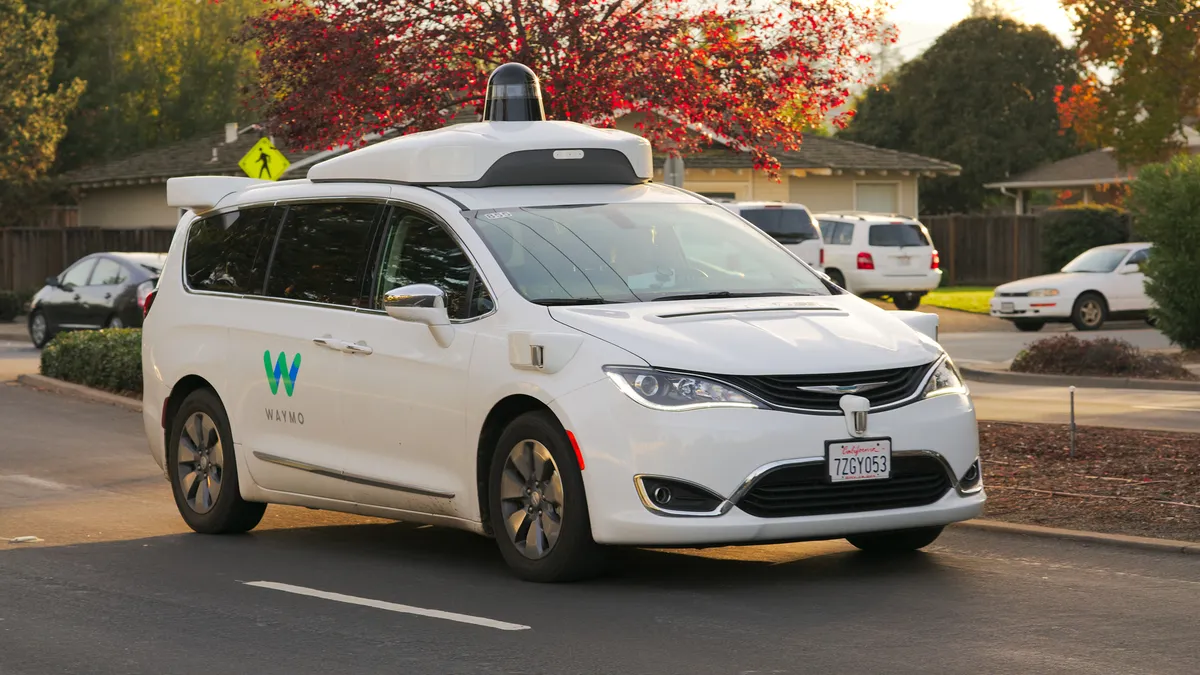Dive Brief:
- In a blog post, Waymo chief safety officer Deborah Hersman detailed how the company’s autonomous vehicles (AVs) are able to detect different types of road users and predict their movements, part of the company’s mission of "building the world’s most experienced driver."
- Waymo scanners are constantly detecting pedestrians, bikers, animals, workers and other objects on the road, then predicting their movements based on "speed, trajectory and road context," Hersman wrote. That can help the AV safely share the road, even in less predictable situations.
- Waymo shared a video of a car predicting that a cyclist on the road would swerve out of a bike lane to avoid a trailer. The driver, Hersman wrote, "is designed to drive defensively around cyclists to help prevent the common collision scenarios that occur between cyclists and human drivers every day."
Dive Insight:
Waymo has positioned itself as an AV leader, logging more than 10 million miles on public roads on top of 7 billion simulated miles (in 2018, Waymo cars drove 1.2 million miles in California, more than any other company). The company has also launched its self-driving taxi service in the Phoenix area, and recently announced plans to expand its research and technical operations in Arizona. Notably, a safety filing with California authorities showed the company had lowered its disengagement rate to 0.09 per 1,000 miles driven, which the company has said is a reflection of successful testing.
Key to that success is making sure AVs can work with other road users beyond connected vehicles and infrastructure. That was driven home last year when an Uber self-driving vehicle struck and killed a pedestrian, prompting companies to suspend testing. An initial investigation said the AV software may have been at fault, although investigators also found that the safety driver was not paying close enough attention.
For example, Hersman writes that pedestrians "can change direction suddenly," a problem especially in crowded intersections. That’s why Waymo has worked on technology that can "perceive and accurately classify different road users," predicting their behavior and creating a safe driving path "many times per second."
According to a 2018 safety report, Waymo AVs rely on a mix of LiDAR laser detection, radar, vision cameras, GPS and audio sensors. It all adds up to a "defensive driving approach" that will be necessary in the early launch of AVs, as they share the road with less high-tech users.











